
“The quarry lies like a gash in the slope of the hills. To the dizzy edges of it creep heather and the bracken; beneath, upon its precipices, a stout rowan or two arise, and everywhere Natures has fought and laboured to hie this wound driven so deep into her mountain-side by man. A cicatrix of moss and fern and many grasses conceal the scars of pick and gunpowder, time has weathered the harsh edges of the riven stone; the depths of the quarry are covered by pools of clear water, for it is a hundred years since the place yielded its stores.“, Phillpotts, p.77.
Then you saw me, now you don’t, an excellent analogy of Foggintor because as Eden Phillpotts remarks above, the tor has been virtually quarried away between the 1800s and early 1900s leaving little evidence of its existence. For those who know the area it would seem the place-name – Foggintor is most appropriate as it does spend quite a lot of time enshrouded in the infamous Dartmoor fog and mist. However, in the assize rolls of 1408 it appears as Vokketorre Gover et. al. p.245. Clearly the ‘torre‘ element alludes to a ‘tor’ but what the ‘Vokke‘ refers to I have no idea, nor do the Place-Name Society? I did think that maybe the word could have originally began with a ‘F’ as in the Devonshire dialect it’s pronounced as a ‘V’ but having done a Google for ‘Fok’ I decided it was best left there, especially as far as Norwegian is concerned.
By why was the tor quarried out? Possibly in some quarters for this simple reason written in 1841; “Foggintor Granite is at present extensively used for all the purposes which granite has been hitherto applied. It is superior to any other in this country for steps. plinths, string and blocking courses, ashlars, pedestals, obelisks, columns, cornices, and indeed for all the other purposes of architecture because of the freedom and comparative ease with which it can be worked… whilst the purity and evenness of its colour, and the fineness of its texture in the deep beds, give it an advantages not possessed in an equal degree by the produce of any other quarry in Great Britain.”, Civil Engineer & Architect Journal, p.322.
I do not propose to delve into the historic minutia of (known originally as Royal OAK Quarry) Foggintor Quarry here because that alone would take an entire website but for anyone who is interested there are some recommendations below for further study. It is supposed that stone was first quarried here for use in the construction of Tyrwhitts’ Tor Royal, other buildings in nearby Princetown and the prison (at a later date) from around 1785. Prior to the building of the railway the stone was transported by horse draw wagons along a purposely built tramway similar to that at Haytor.
Initially the land lease from Sir M. M. Lopes was owned by the Plymouth & Dartmoor Railway Company whose plans very much associated the earlier building of the railway with the working of the quarry. In 1823 the lease was re-assigned and both the railway construct and the quarry to Messrs. Johnson & Brice who at the time owned the Haytor Quarries . Harris, p.83. In the early 1840s and having previously worked Haytor Quarries they closed these down and formed the Haytor Granite Company to work Foggintor. The granite at Haytor was by far more superior to that of Foggintor and having established a reputation for good quality granite from Haytor they then sold granite from Foggintor under the Haytor Granite Company’s name. Which, to the cynical eye may well have mislead some people into thinking the stone had come from Haytor. Hallett, p.37. It is for this very reason that in some quarters people say that the granite used in the construction of the London Bridge came from the Haytor Quarries.
Large quantities of granite were quarried on and off throughout the 19th century, one report from 1833 suggests in one year 8,374 tons of granite were removed from the quarry. Brown, p.8. In the November of 1858 it was reported in many newspapers that a 10 pound powder blast removed a single block of granite weighing over 1,000 tons, it measured 45 ft. long, 25 ft. wide and 14 ft. thick. This just gives some idea as to how effective the quarrying operation was at Foggintor.
To give an idea of the extent of work going on at Foggintor Quarry during the 1840s it was noted that at least 300 men were employed there. Among the workers were about 20 blacksmiths, carpenters, turners, stone masons, labourers, horsemen and their horses. There were numerous buildings on the site which included; a foundry, a smithy, stables, office and tool store house, a powder store, a manger’s house, a cottage and at a much later date a chapel. By the late 1840s a series of workers cottages had also been constructed. Brewer, pp. 70, 81 & 94. In 1885 it was estimated that around 100 people lived in and around Foggintor and prior to that they had to go to Princetown to collect their mail. But in the May of that year it an appeal was announced asking that a regular postal service should deliver the mail to their houses.
As you can imagine this was a place full of hustle and bustle and with many of the workers living nearby quite a large community grew up in and around the quarry. As noted above there even was a chapel although surprisingly enough there was no inn or pub, the closest being at either Princetown or Merrivale. In 1841 an advert appeared in The Exeter & Plymouth Gazette offering; “Good lodging, washing and cooking, for granite masons and quarry labourers on reasonable terms by Elizabeth Counter, within 20 minutes of Foggintor Quarry.” Workers could also find lodgings in some of the cottages at the quarry. In 1883 the Tavistock Gazette reported that the wife of one of the blacksmiths at the quarry had deserted her husband and seven children to run of with a young man who was lodging with them. Seemingly every second Friday she was supposed to settle her bills with the local tradesman but on this occasion she took the money and fled with her young lover to pastures new. As the community grew at and around Foggintor the need for a school became apparent and after using the nearby Mission Hall a much larger school was built on the site of what today is ‘The Four Winds‘ carpark.
In the March of 1864 an advert appeared in many newspapers announcing the lock, stock and barrel sale of all the Haytor Granite Company’s assets due to them going into liquidation in the November of the previous year. Amongst the assets were Foggintor Quarry along with the buildings, machinery, etc., the tenders to be submitted by the 4th of April 1864 (see facsimile below) . In the early 1900s the ownership of the quarry was in the hands of a Plymouth company called Pethicks, the demise of Foggintor quarry came in 1906 when quarrying was stopped in favour or working the nearby Swell tor Quarry. Harris, p.83. I can’t find any information as to who owned Foggintor Quarry between the Haytor Granite Company and Pethicks
One cause of confusion are the famous ‘Corbels’, which today sit beside the old rail track to the west of Swell Tor. These originally were intended to be used for the construction of the old London Bridge but for whatever reason were never utilised for that purpose. The bridge was sold to the chairman of the McCulloch Oil Corporation in 1967 and was shipped stone by stone to his Arizona estate. During this process some of the corbels got damaged so these was replaced the redundant originals sat near Swell Tor. Brown, p.8. So what causes the confusion in some minds is from whence did the granite used to make the corbels come from, was it Foggintor Quarry or Swell Tor Quarry? Hemery states that they were cut in 1903 from Swell Tor Quarry, p.1029, Mike Brown also opts for Swell Tor, p.8, as does Brewer, pp. 49 -56, and Hayward, p.244. Whereas Hallett, p.35, opts for Swell Tor as do various other authors on the internet. Harris is very non-committal and just suggests that the ‘London stone’ came from the quarries (Foggintor and Swell Tor), p.83. I think it’s safe to assume they the corbels originated from Swell Tor.
However there is no question that granite from Foggintor was used in some of London’s landmarks the most famous being Nelson’s Column. In the April of 1842 it was reported in The London Standard newspaper that the supply of Foggintor granite was not keeping up with demand. This in turn led to a delay in the construction of Nelson’s Column which meant that Edward Bailey, the sculptor of Nelson had to resort to using a more perishable kind of stone for the statue. This turned out to be Craigleith Sandstone which at the time cast doubts as to its durability over the Dartmoor granite. In the may of 1842 it was also reported that the cause of the supply delay was due to the Foggintor masons striking in support of their London counterparts who were in dispute with the monument’s contractors.
But what about now? As noted above the quarry ceased operations in 1906 and some 22 years later it appears that nature had begun to reclaim its own and from what was a busy place had transformed itself into a haven of tranquillity: “One great silence is the quarry now – an amphitheatre of peace and quiet hemmed by the broken abutments of granite, and opening upon the hillside. The heather extends over wide, dun spaces to a blue distance, where evening lies dim upon the plains beneath; round about a minor music of dripping water tinkles from the sides of the quarry; a current of air brushes the pools and for a moment frets their pale surfaces; the dead rushes murmur and then are silent; here and there, along the steps and steep places; flash the white scuts of the rabbits. A pebble is dislodged by one of them, and falling into the water beneath, sets rings of light widening out upon it and raises a little shadow.”, Phillpotts, p.78.
Some 88 years down the line things are not quite so peaceful as the various 21st century outdoor leisure activities make their presence felt . Having worked on this page for a while I decided to travel down and take some photos. Originally I was intending visiting on the 6th of May but things got in the way and the trip was postponed. As it happened this was an excellent outcome as on that very day a film crew from the BBC descended on the quarry to film an episode of ‘The Coroner’ – just one of the modern day intrusions. An earlier production filmed at the quarry was the 1931 version of ‘The Hound of the Baskervilles’. This was directed by Gareth Gundrey and starred Robert Rendel as Sherlock Holmes and produced by Gainsborough Pictures. In 1937 both Foggintor and Swelltor quarries along with nearby Yellowmead Farm were again the locations for some scenes in ‘Owd Bob’. This was a film directed by Robert Stevenson and starring Margaret Lockwood and produced by Gainsborough Pictures.
According to UKClimb.com there are 10 different climbing routes around the quarry, I particularly don’t like the sound of the ‘Fogginard’ route but the ‘Swan Lake’ sounds like a ‘classic’. The military also use the various quarry faces for training exercises as can be seen by the permanent picket fixtures above the quarry floor. The quarry was the location for part of the 2012 ”South-west Sword Exercise’ where members of 45 Commando practiced various vertical assault skills. The Tavistock branch of the Dartmoor Search and Rescue Team also train in the quarry as the waters provide excellent conditions for recovering fallen climbers. Whilst on the subject of people in the water Foggintor Quarry is also a popular spot for ‘Wild Swimming’ mostly due to the shelter and tranquil waters although how it could be described as ‘wild’ I know not. For those of a literary bent the quarry was also the location for Eden Phillpotts novel ‘The Red Redmaynes‘ published in 1922 in which it was the scene of a murder mystery novel.
On the 13th of May the weather forecast for the following day looked good so a trip down to Foggintor was planned. It’s a long time ago since I last visited there and was eager to see if it had changed much. I remember on my last visit early one foggy morning a slight feeling of unease whilst walking among the derelict buildings which had the appearance of some catastrophic post-apocalyptic event. The quarry itself was deathly still with the continual drip, drip of water as it fell droplet by droplet from the sodden ferns clinging to the quarry face.
Early start, well not so much as far as I was concerned but to a teenage daughter 5.00am is regarded as the middle of the night, I think she was amazed to see that daylight had the affrontery to appear at that ungodly hour. On the trip down I was trying to extol the virtues of getting to the quarry early and how atmospheric the place would be when deserted and only the early morning wildlife to share it with. It was 7.30am when we arrived and found the small car park at the top of Yellowmeade Lane full along with the small one opposite – I knew we should not have stopped to do some ‘pony peeking’! But strange as it was I managed to squeeze the car in and in the shake of a boot we were trolling off down the track. At the Red Cottages we found the famous chimney pot remains, well I say we, it was Holly really, I was more interested why a Landrover was parked right up at the quarry. Having reached the quarry the questions as to what the Landrover was doing along with what looked like a Bedouin camp was soon answered. On the side of the vehicle was a sign – ‘Bear Grylls Survival School’ – bloody marvellous, so much for silence and solitude. I am not sure as to exactly which of Bear Grylls’ Survival Course this was but if it was the 24 hour one then that set the participants back £349 and if it was the 4 day one then they were £999 lighter in their wallets? Bloody hell, join a Dartmoor Search and Rescue Team and get it and more for free. Cursing we made our way into the mouth of the quarry half expecting to see hoards of people dangling from ropes like monkeys in a banana tree. But hey, it was deserted, just the two of us, a few birds, a light breeze lapping the waters against the quarry faces and silence. The only things missing from Phillpotts’ description above was the dripping water and the rabbits. Just to recreate the scene we threw a chunk of wood into the pool and watched the ever widening rings of ripples. The surface water was also shimmering silver as the breeze blew tiny waves out and across the quarry. Having drank in the solitude and peacefulness for a good twenty minutes we moved on the photograph the various ruins dotted around the place.
In the distance we could see a herd of Bear Grylls’ ‘guests’ continually running up to the top of the Swell Tor ridge and back down again inter-dispersed with sit-ups, imagine actually paying for that pleasure? That explained why the quarry was still deserted, they were all surviving the early morning work-out, mind you it does say on the company Landrover; “It May Hurt a Little’ – too true blue. I think we managed to get all the ruins we needed, certainly got the mysterious arch which Holly said made the ruin look just like a Medieval castle. By the time we left the quarry the survival instructors were preparing the ropes and climbing gear, guess the next round of torture would be traversing the quarry on a single rope, abseiling upside down the quarry face etc. All I could think was ; “good luck to them, we’re off to the cafe for a sausage and bacon bap.”
I will let Eden Phillpotts end with some more of his lines, this time from his novel ‘The Red Redmaynes’; “the detective came to a great crater that gaped on the hillside, and stood above the dead quarry workings of Foggintor. Underneath him opened a cavity with sides two hundred feet high. Its peaks and precipices fell, here, by granite granite steps, here stark and sheer over broad faces of granite, where only weeds and saplings of mountain ash and thorn could find a foothold. The bottom was one vast litter of stone and fern, where foxgloves nodded above the masses of debris and wild things made their home. Water fell over many a shelf and in the desolation lay great and small pools.” – p.10.

Bray, E. 1838. Traditions, Legends, Superstitions and Sketches of Devonshire. London: John Murray.
Brewer, K. 1997. The Railways, Quarries and Cottages of Foggintor. Newton Abbot: orchard Publications.
Brown, M. 1999. Dartmoor Field Guides – Vol. 13. Plymouth: Dartmoor Press.
Civil Engineer & Architect Journal. 1841. Scientific & Railway Gazette – Vol. IV. London: The Proprietor.
Hallet, J. 1994. Around Princetown’s Quarries. Newton Abbot: Orchard Publications.
Hayward, J. 1991. Dartmoor 365. Curlew Publications.
Harris, H. 1986. The Industrial Archaeology of Dartmoor. Newton Abbot: Peninsula Press.
Phillpotts, E. 1922, The Red Redmaynes. New York: The Macmillan Company
Phillpotts, E. 1928. A West Country Sketch Book. London: Hutchinson & Co. Ltd.
Gover, J. E. B. et. al. 1992. The Place Names of Devon. Nottingham: The English Place-Name Society.
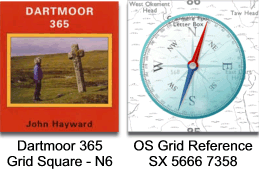
For those who are on the Dartmoor 365 challenge Hayward selects the corbels, a trough and a bollard as his main features for this grid square although all are related to Swell Tor.
 Legendary Dartmoor The many aspects past and present of Dartmoor
Legendary Dartmoor The many aspects past and present of Dartmoor

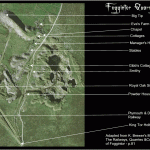
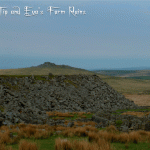
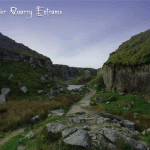
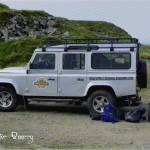

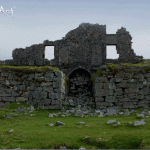
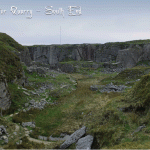
Hi,
An interesting peice on Foggintor, you mention the lack of inns and having to go into Princetown or down to Merrivale. I think you may find that there was another hostelry at Rundlestone Cross. On the 1840 Tithe Map it shows the building as a farm but the farmer is named as Hugh Hill who Kath Brewer has down as the inn keeper so I suspect it might have been like the old Rugglestone and was both farm building and inn but who knows? Great website!
Talking of quarries and stone, it may be of interest to know that the Dartmoor Society’s Annual Debate on 20th October 2018 is about Dartmoor Stone. ‘Are we using Dartmoor’s Stone Resources Wisely?’
It is to be held at Meldon Village Hall and full details can be found on our website.
Honestly Tim that story of the Bear Grylls survival school down at the quarry made me laugh so much. Was down there today Jan2020 , no sign of them thank goidness just tge atmosheric quarry lake, ripples too! Beautiful ruins lit by winter sunshine and tge distant call of the buzzard, stunning.
Thank you for your amazing website, it is my oracle.
Tim, re: granite used to construct the Old London Bridge (the Rennie one). It is on record that need to replace the previous 600 year-old London bridge was known in 1799/1800. The winning design for an intended replacement was that of John Rennie (senior). The “Rennie” bridge was subsequently built, although completed by attention of Rennie’s son (another John) due to his fathers death. The foundation stone of Rennie’s London Bridge was laid on 15th June 1825 and the bridge officially opened by King William IV on 1st August 1831. In later years (1902-04) the bridge was widened from 52 feet to 65 feet. These dates put a few questions in my mind; 1) I understand the potential for confusion you suggest over the “Haytor” source of granite for London Bridge, but if Haytor Quarry itself was not closed down until the 1840’s as you say then is it the case that granite for the 1825-31 London Bridge construction work was indeed obtained from Haytor Quarry as seems possible at least in date terms? Several apparently respectable sources say this was the case. 2) If the so-called “Haytor Granite Company” (which actually sold granite from Foggintor) was not formed until the 1840’s, the Rennie London Bridge had already been completed for around ten years by then. The best association an 1840s-formed “Haytor Granite Company” could thus have with a bridge completed ten or more years earlier is the supply of granite for the 1902-04 widening works. Is that the case? 3) Of course, if Johnson & Brice had a lease for Foggintor Quarry from 1823 it is equally possible that granite for the 1825-31 London Bridge works did come from Foggintor Quarry (or perhaps Swelltor Quarry) rather than Haytor Quarry, but if a Princetown operation did have that honour was it Foggintor or Swelltor? BTW if these men later had a company called “Haytor Granite Company” suggestion why there should be confusion over source of granite for 1825-31 works is amply supported. 4) Finally, the existence of granite left near Swelltor Quarry is undeniable and there is ample suggestion it was intended for London Bridge, but would that be intended for the original 1825-31 construction works or the later 1902-04 widening? As relief from such questions, I am currently trying to confirm another suggestion made in relation to Dartmoor granite and Rennies London Bridge… I am told that the London Bridge parts sent to the USA did not all arrive intact and that some were returned to the UK as pattern for replacements to be made. Some of the returned broken parts, if what I am told about their final destination proves true, were used to repair the breakwater at Bude in Cornwall. This contention has been made by someone I know to have been engaged in that repair work. It may be that Dartmoor granite has graced London Bridge, travelled to the the USA, come back to the UK, and is now “retired at the seaside” in Bude!